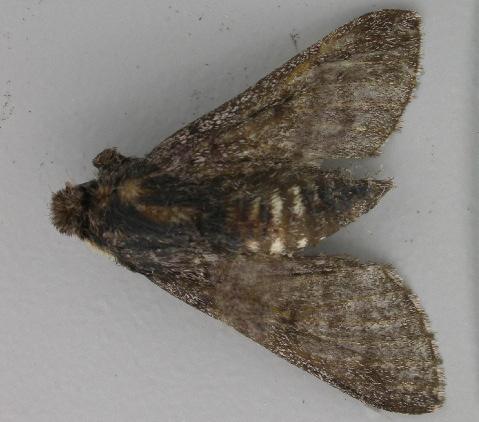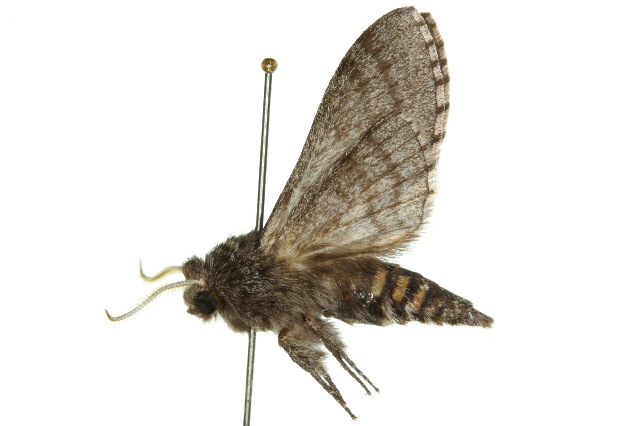
| SMERINTHINAE, SPHINGIDAE, BOMBYCOIDEA | (donherbisonevans@yahoo.com) and Stella Crossley |

(Photo: courtesy of Axel Hausmann,
SNSB, Zoologische Staatssammlung Muenchen)

| SMERINTHINAE, SPHINGIDAE, BOMBYCOIDEA | (donherbisonevans@yahoo.com) and Stella Crossley |

(Photo: courtesy of Axel Hausmann,
SNSB, Zoologische Staatssammlung Muenchen)
The early instar Caterpillars of this species are green, with no tail spike. Later instars develop a blunt reddish horn on the head, and a tiny black tail spike, length about 1 mm. The caterpillars are thought to feed on various species of
The caterpillars were observed to go only through four instar phases, the lowest number of any of the SPHINGIDAE species. The caterpillars grow to a length of about 4.5 cms. They burrow into the ground to pupate at a depth of about 10 cms. The pupa has a length of about 2.5 cms.
The adult moths have grey forewings, each with two pairs of wavy dark stripes, and a small central black-edged pale spot. The hindwings are grey with a broad darkband along the hind-margin. The wingspan is about 4 cms. The adults have no haustellum, and cannot drink or feed.

The species is found in
Further reading :
Max S. Moulds, James P. Tuttle and David A. Lane.
Hawkmoths of Australia,
Monographs on Australian Lepidoptera Series, Volume 13 (2020),
pp. 154-156, Plates 34, 78, 87.
James P. Tuttle, Max S. Moulds, & David A. Lane,
A Review of the hawk moth genus Hopliocnema Rothschild and Jordan,
with the description of two new species (Lepidoptera: Sphingidae),
The European Entomologist,
Volume 4, Part 2 (2012), p. 71.
 caterpillar |  butterflies |  Lepidoptera |  moths |  caterpillar |
(written 21 March 2020)